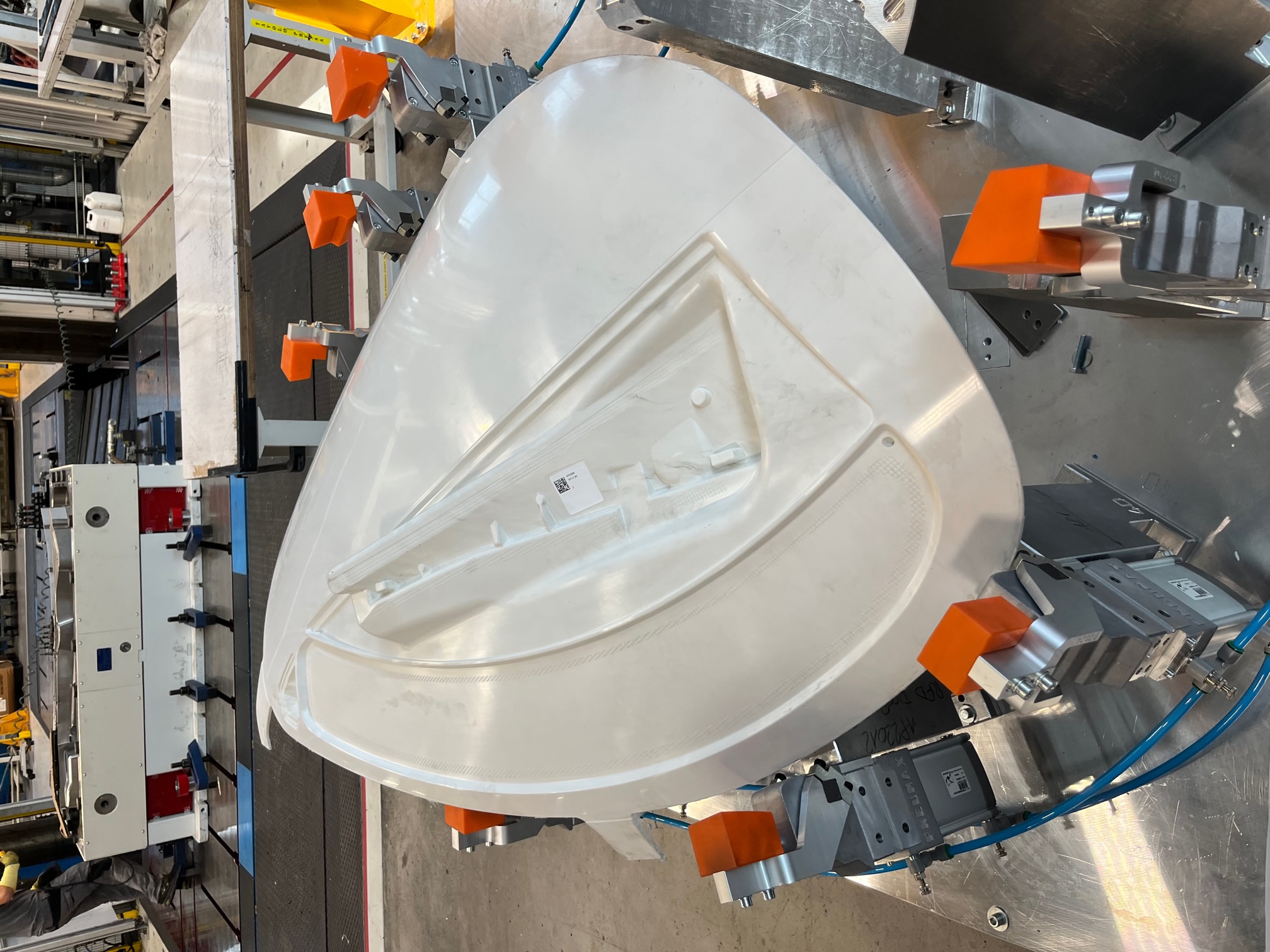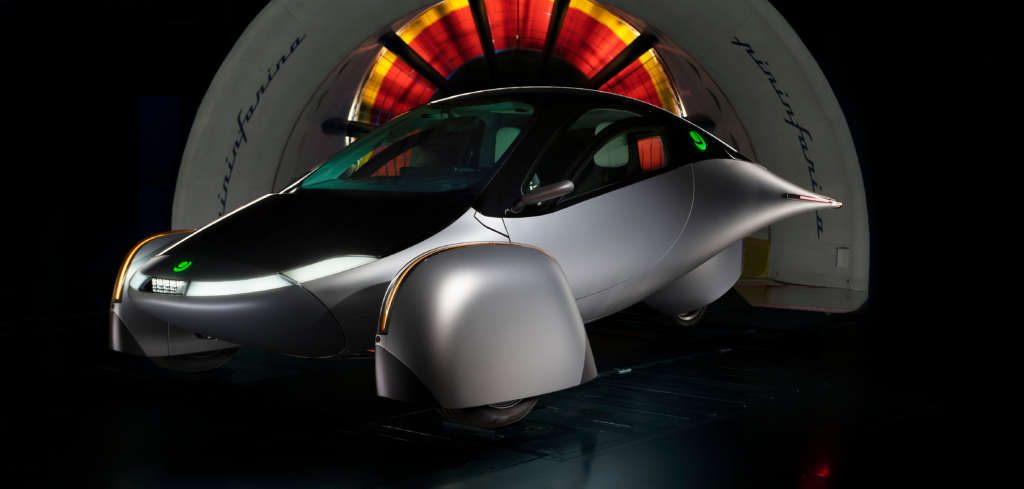In July this year, solar electric vehicle producer Aptera began validation work for the aerodynamic shape of its new vehicle – a teardrop – in Pininfarina’s wind tunnel. The company reports that since this validation stage began, more than 60% of the essential equipment and tools needed for manufacturing the vehicle’s body structure have been built and commissioned.
Included in the essential equipment are stamping dies and post-process tooling, which will be applied in production-intent (PI) builds that Aptera will use for further testing and validation.
These parts will go through a thorough validation process using a coordinate measuring machine to inspect for proper thickness and surface tolerance. Once all six main parts of the vehicle are complete and verified, they will be bonded together to form the vehicle’s body in carbon, with the full structure then being validated again for tolerance of the body closures. The process to construct a fully assembled PI vehicle will then unfold.
During testing and validation, PI builds undergo meticulous testing, focusing on various critical elements including the suspension, brake systems, airbag calibration, software integration, powertrain and battery.
Safety and crash testing will be the focus during the next phase of Aptera’s validation process. The PI cars will undergo a series of comprehensive analyses, including regulatory compliance checks, quality assurance, durability testing and fine-tuning.
According to Aptera, production parts for the PI builds are being stamped and validated at CPC Group, Aptera’s manufacturing partner, in Italy. Experts at the company’s headquarters in San Diego, California, are sourcing equipment for solar panel and battery production.
More on Aptera’s solar electric vehicle in the September 2023 issue of ATTI here



